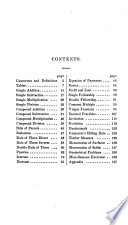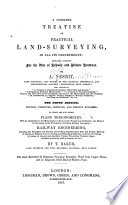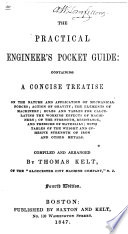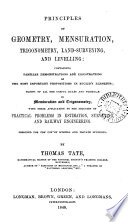 | William Watson (of Beverley.) - 1845 - 188 pages
...diagonal measuring 2 chains. Ans. 3a. Or. 18p. PROBLEM 3. — To find the area of a triangle, when three sides are given. RULE. From half the sum of...sides, subtract each side severally, multiply the lialf sum, and the three • These, and the following, should be laid down with a plotting scale. t... | |
 | William Vogdes - 1847 - 324 pages
...perches : how many acres does it contain ? PROBLEM XI. Given three sides of a triangle, to find the area. RULE. From half the sum of the three sides subtract...sum and the three remainders continually together, and the square root of the product will be the area required. EXAMPLES 1. What is the area of a triangle... | |
 | Anthony Nesbit - 1847 - 492 pages
...foregoing method. 4. When the three sides of a triangle are given, the area may be found as follows. From half the sum of the three sides subtract each...sum and the three remainders continually together, and the square root of the last product will be the area required. This method is too prolix, except... | |
 | 1847 - 190 pages
...su53-25 XT7S I When only the three sides of a triangle can be given, to find the artaRule — Prom half the sum of the three sides subtract each side...severally ; multiply the half sum and the three remainders together, and the square root of the product is equal the area requiredRequired the area of a triangle,... | |
 | 458 pages
...that is, equal to 12 sq. in. PROBLEM III. To find the area of a triangle, whose three sides are given. From half the sum of the three sides subtract each side severally, then multiply the half sum and the three remainders continually together, and the square root of the... | |
 | Thomas Tate (mathematical master.) - 1848 - 284 pages
...perpendicular 25-25 ft. ? Ans. 68-736. 3. PROBLEM. To find the area of a triangle, given the three sides. RULE. From half the sum of the three sides subtract...sum and the three remainders continually together, and the square root of the last product will be the area of the triangle. (See Trigo. Art. 36.) . Note.... | |
 | Peter Nicholson, Joseph Gwilt - 1848 - 750 pages
...PROBLEM III. PLATE 50. To find the area of a triangle whose three sides only are given. From the half sum of the three sides subtract each side severally; multiply the half sum and the three remainders together, and the square root of the product will be the area required. EXAMPLE I. Required the area... | |
 | John Bonnycastle - 1848 - 320 pages
...Ans. 102.5ye. PROBLEM 111. To find the area of a triangle whose three sides only are given. RULE.* 1. From half the sum of the three sides subtract each side severally. * Demon. Let AC=iJ, AB=6, xc—c, and AD=ar/ (See preceding fig.) Then, since uii:=6 — x, we shall... | |
 | D. M. Knapen - 1849 - 300 pages
...is 45 rods ? Ans. 5.48 acres. When the sides of H scalene triangle are given, to find its area : — From half the sum of the three sides subtract each side severally ; then multiply together the half sum of the three sides, and the three remainders, and extract the... | |
 | John Radford Young - 1850 - 294 pages
...the length of that side. Ans. 28-2 yards. PROBLEM IV. — To find the area of a triangle when all its three sides are given. RULE. — From half the sum...severally. Multiply the half sum and the three remainders together, and the square root of the product of these four quantities will be the area. The theoretical... | |
| |